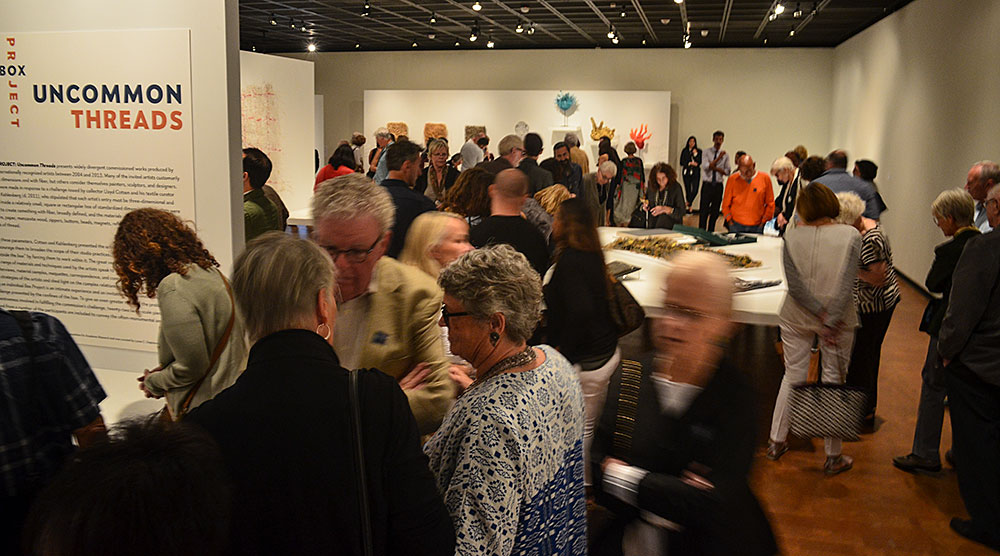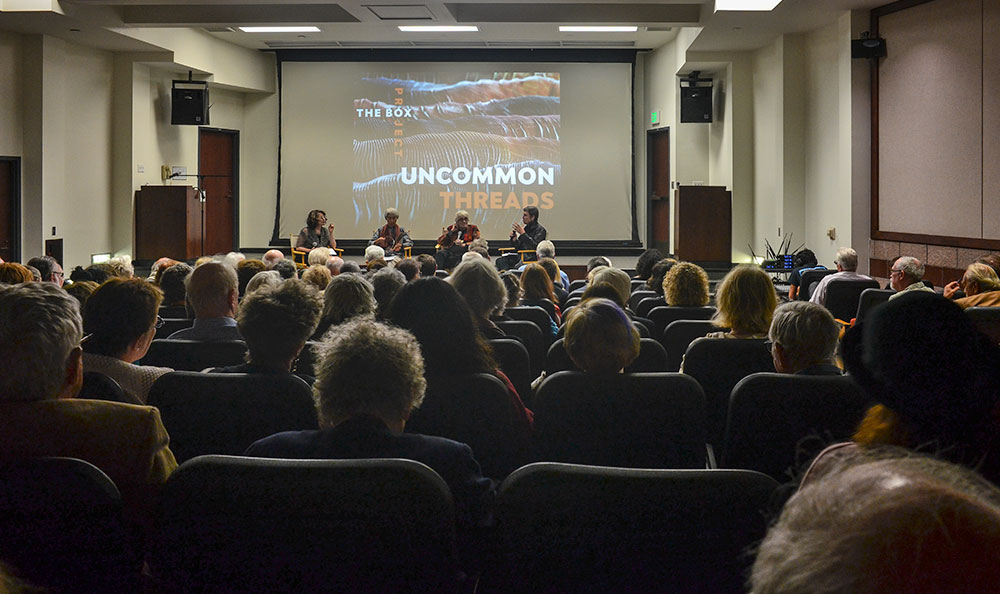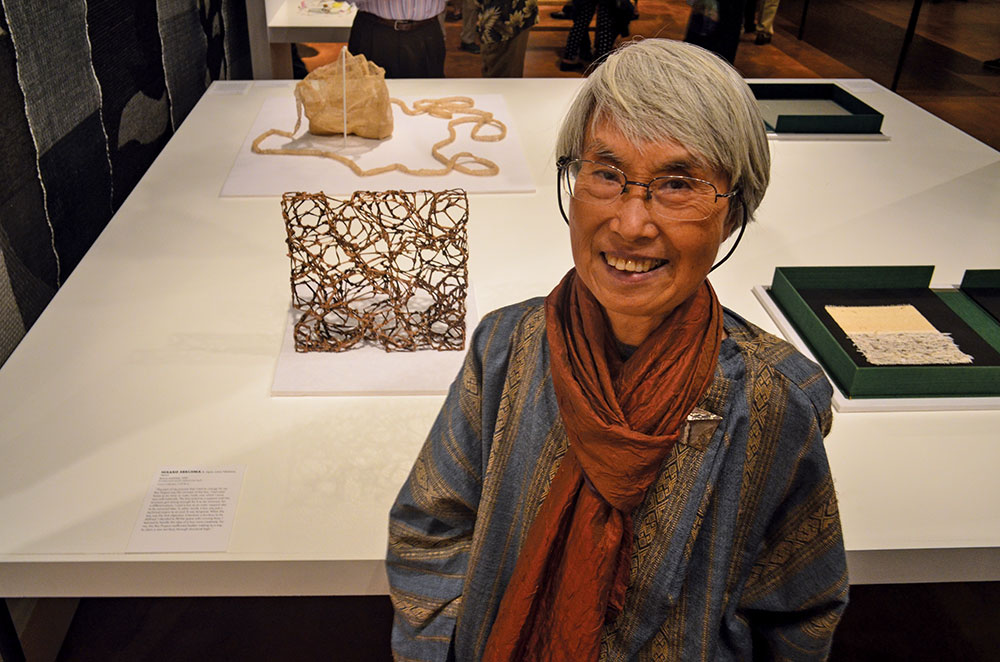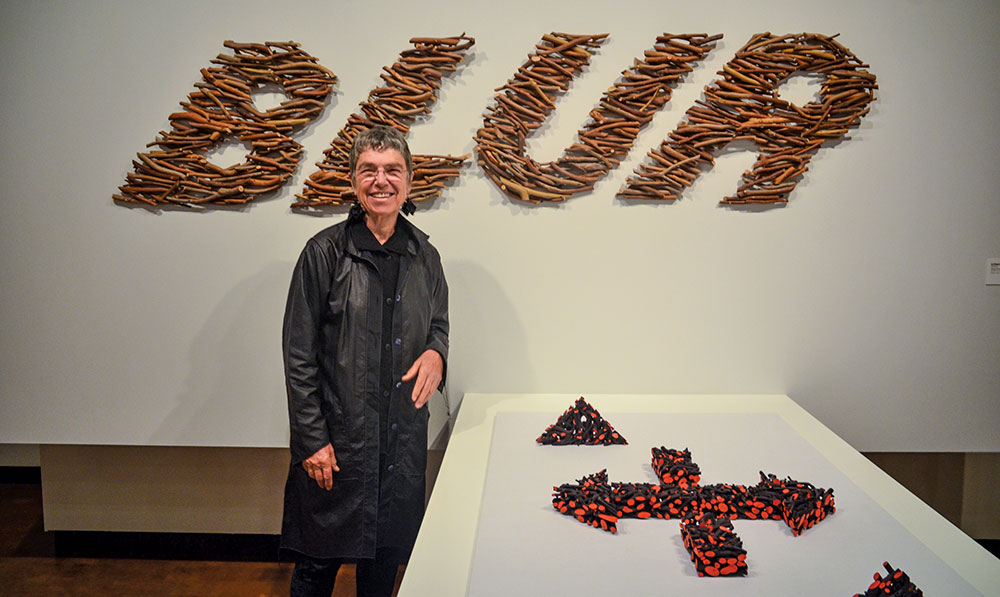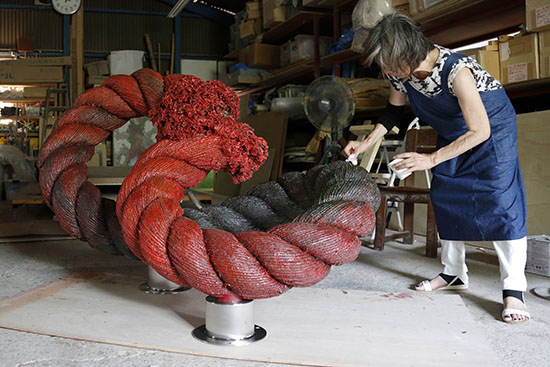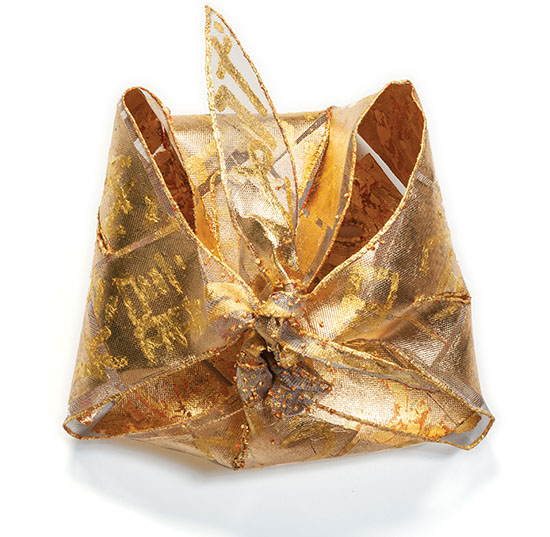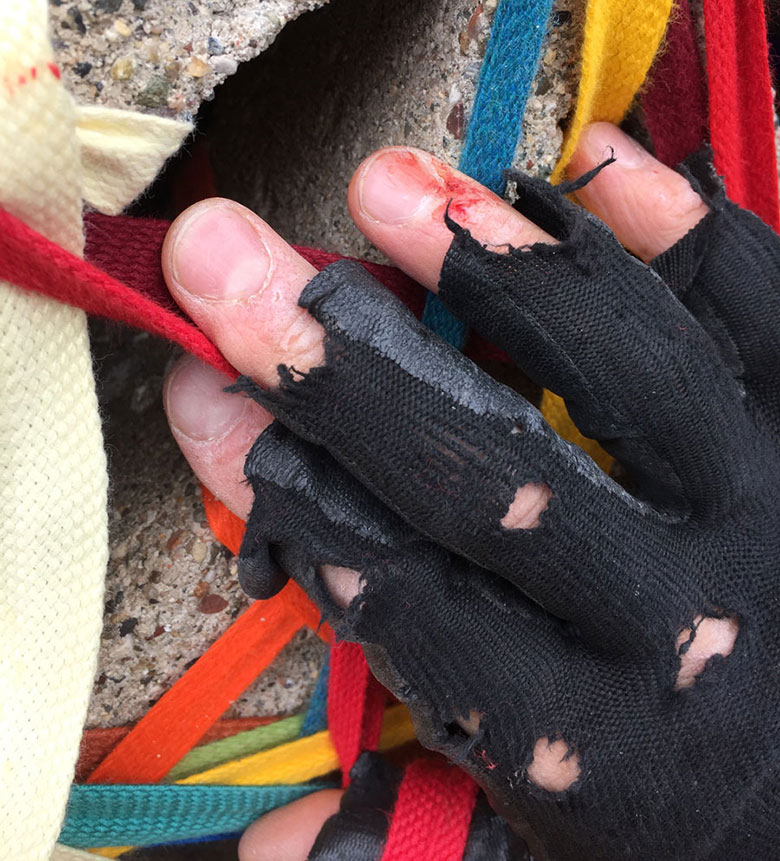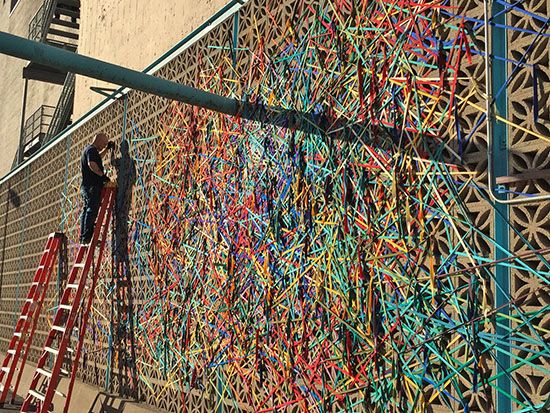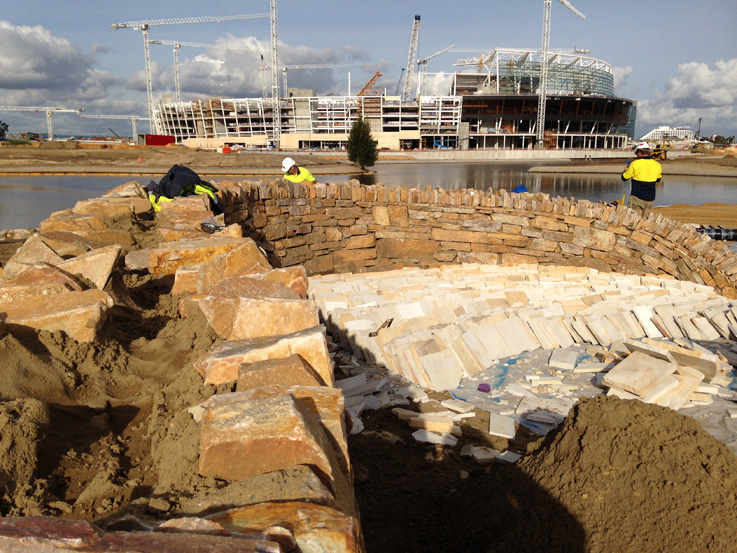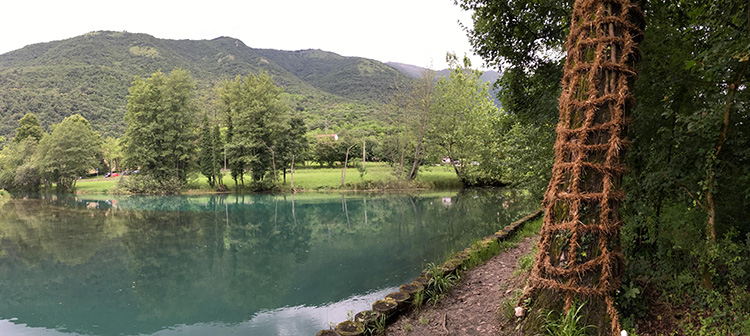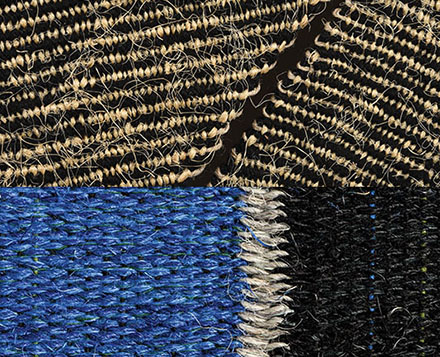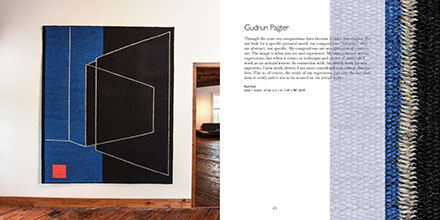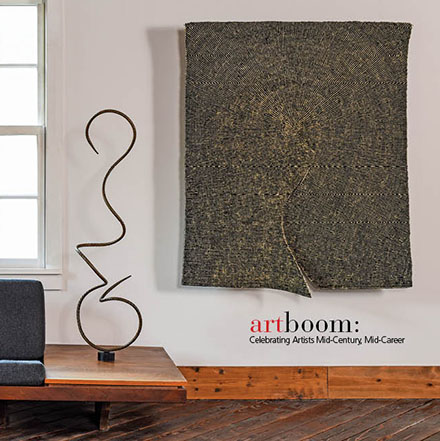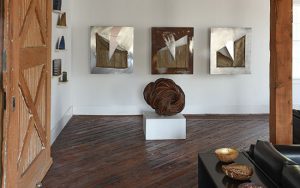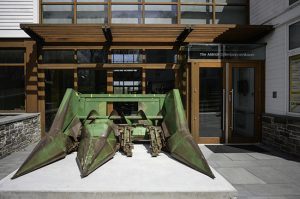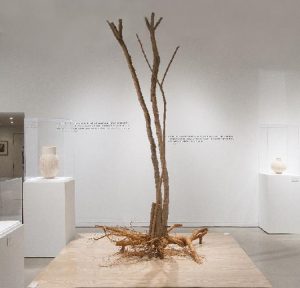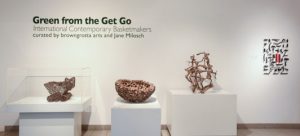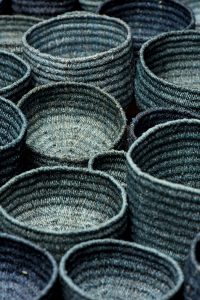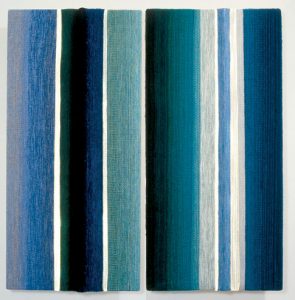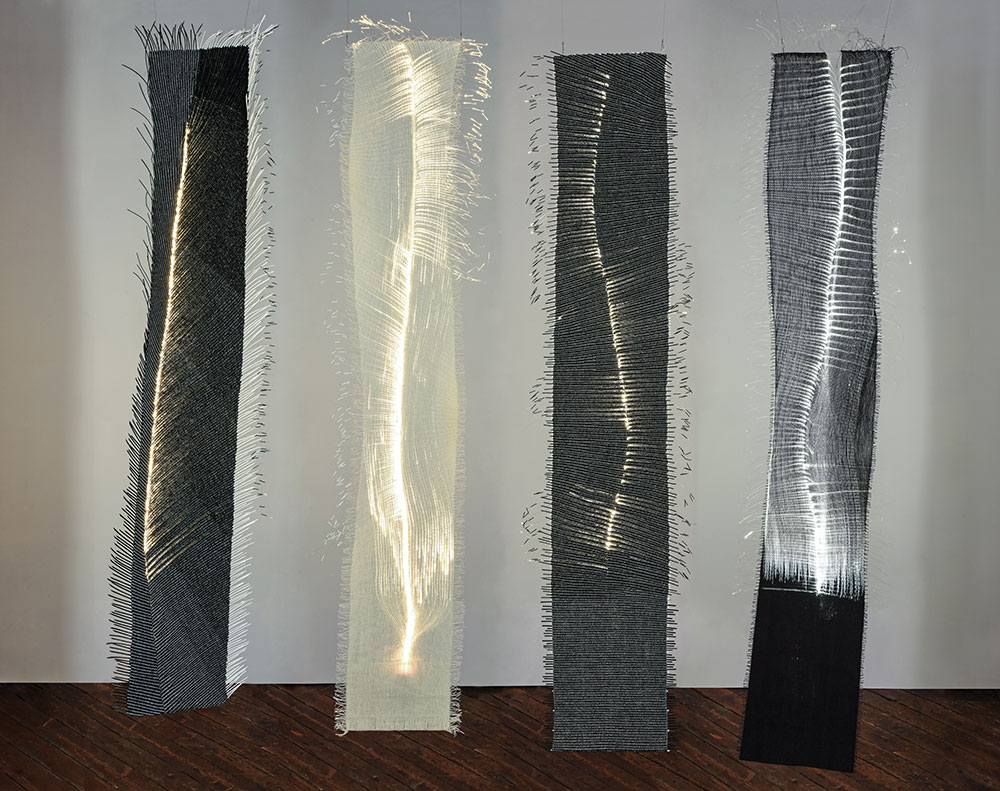
2-5wc Wlodzimierz Cygan, From the Cycle Tapping: March, May, April, June, 2014, viscose, linen and fiber optic
111.5” x 28”; 117” x 34”; 112” x 23”; 120” x 33”. Photo by Tom Grotta
This November, browngrotta arts will feature four textiles of fiber optic monofilament by innovative Polish artist, Wlodzimierz Cygan, in its booth # 921 at SOFA Chicago 2016. The four works, titled March, April, May and June, are from the Cycle Tapping series. Works from this series have been shown in China in 2014 in the From Lausanne to Beijing Fiberart Biennial and at Asia-Europe III which opened this month at the Textile Museum in Krefeld, Germany then travels to the Central Museum of Textiles, Lodz, Poland and the Janina Monkute-Marks Museum in Kedainial, Lithuania. The works in Asia-Europe III are based on technical innovation and on diversity of material. Participating artists have experimented and perfected the technique of their choice. “I use optical fiber mono-filament with increased light transmission for warp and weft as a complementary material for the textile structure, “ says the artist. In doing so, he is able to connect two contradictions: durability of textile materials and a constant change of the light. The woven, flexible light in these works is constantly changing its intensity, “like the passing of time transformed by seasons which slowly and gently create vibrant poetic stories,” he says. “Shadows cast on the walls play an importnat role in planning the cracks, holes, irregular and uneven edges of my compositions.” Włodzimierz Cygan’s work has been exhibited in Europe and abroad, including the Jean Lurcat Museum in France, the Kyoto Art Center in Japan and the National Gallery in San Jose, Costa Rica. SOFA Chicago opens November 2nd and runs through November 6th at the Navy Pier. For more information visit: http://www.sofaexpo.com.

